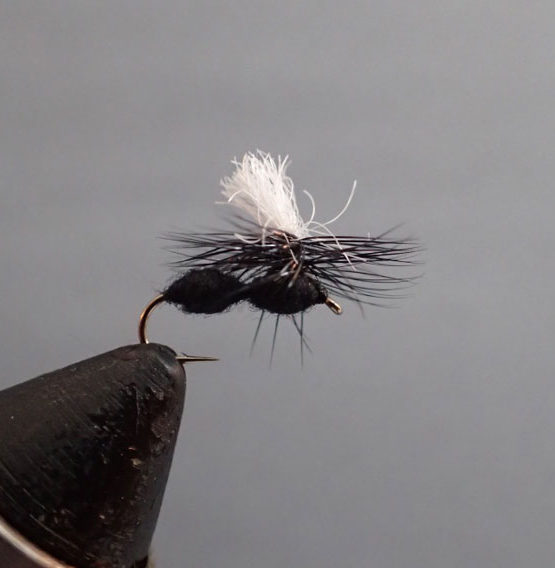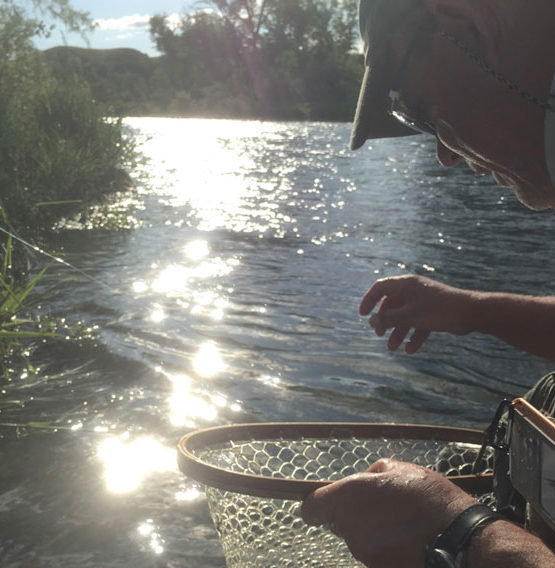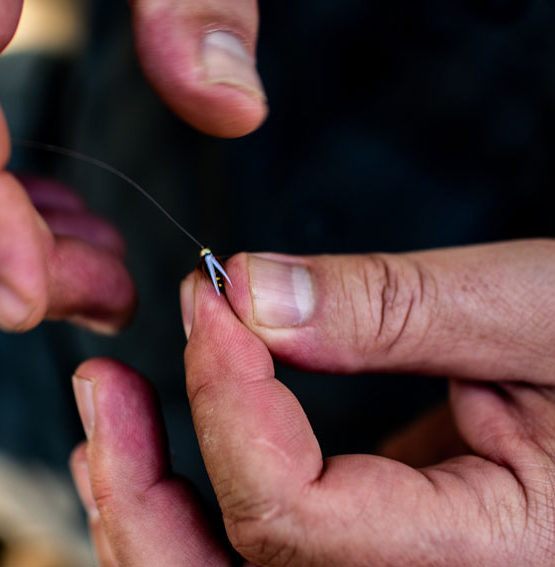If you’re searching for an all-around productive fly pattern, look no further than the Zebra Midge.
While it might not draw the same excitement as a big ol’ streamer, there’s just no arguing with its versatility and effectiveness in almost any fly fishing situation.
And if you’re ready to step into the world of a small but mighty fly that will deceive a fish into a quick meal, keep reading.
As the saying goes, “it ain’t the size of the tool, but how ya use it.”
What Is A Zebra Midge?
In short, a Zebra Midge is a fly pattern used to imitate both the pupal and nymphal stages of a wide variety of aquatic-born insects. The Zebra Midge features a tapered body, ribbed abdomen, and a beadhead, making it a versatile and effective fly pattern for all sizes and species of trout.
You might as well call the Zebra Midge the Ultimate Midge!
Why?
This classic design resembles a variety of midges in the water. Thus, this weighted and bead-headed beauty does wonders just about any time of the year in the West.
Without wings or appendages, it’s about as basic of a design as you can get. Yet, this fly is known to create a feeding frenzy underneath the water.
For example, a red Zebra Midge is a great choice during the late fall/winter months.
Meanwhile, a green Zebra Midge can imitate a pupae or even a caddis emerger (depending on the depth at which you fish it). During the Summer, the green Zebra Midge will start a party in your favorite holes.
To put it simply, when in doubt, use a Zebra Midge! In fact, I recommend loading your box up with a variety of sizes, colors and styles.
As I said previously, these midges don’t yet have the appendages of an emerger or caddis. However, if you’re thinking about tying a few of your own, don’t be afraid to add some flair–even a little tail may be worth exploring!
You Might Also Like:
- 10 Best Midge Patterns For Trout
- 10 Best Flies For Brook Trout (Expert Angler Weighs In)
- 12 Killer Foam Flies You Need To Try
- 10 Best Grasshopper Fly Patterns
- San Juan Worm: What It Is & How To Tie It
- 25 Best Fly Fishing Gifts: A Legit Gift Guide For Anglers
When To Use A Zebra Midge
You can use a Zebra Midge year-round in almost any freshwater fly fishing situation. Due to its versatility and simplistic design, this pattern is particularly effective in pocket water, run-off, riffles, or deep, slow-moving pools.
In other words, you can use a Zebra Midge as frequently as you want to!
Generally speaking, the Zebra Midge (pending size) can be both a killer lead fly or secondary fly.
Play around with the styles, setups and weight. I’ve said it before, trial-and-error is sometimes the game you play on the river. It ain’t life or death, so don’t fret too much if you aren’t getting bumps.
The beauty is, you have a box with a variety of options to keep interchanging with on your line (at least you should)!
There is a quote out there that goes like this, “if catching fish was all I was after, I would have stopped fishing a long time ago.”
Half the fun is getting creative with your selection!
Where To Use A Zebra Midge
There are plenty of bodies of freshwater that support the aquatic insects that the Zebra Midge imitates. Rivers, ponds, lakes, creeks and tributaries can all be fantastic places to throw the Zebra Midge. In general, if a body of water contains fish, you should consider using a Zebra Midge.
Colorado breeds all five of these killer bodies of water, from the Northwest Corner to the Southwest ranges.
Whether you are on the Yampa River up North or on the Blue Mesa Lakes, in the Gunnison National Forest, you can drift or drop a Zebra Midge into the agua for a fun-filled day!
Grab your phone or a map, preferably a map…I always encourage my readers to go paperback when possible (outside of reading this article, of course!), it will heal your mind and eyes!
Grab your lady (tell her it’s better than shopping), your man (tell him you’ll bring beer), son or daughter, mother or father, and if you have to, your water dog and go explore (my boy Akiva has a tendency to swim through my line, is why I mention this…love him though)!
Zebra Midge Materials
Hooks: Tiemco 2488 Sizes 16-20
Beadheads: Tungsten Silver or Gold Bead
Thread: Ultra Thread 70 Denier Black, Red and Green
Wire: Ultra Wire Small Silver or Gold
How To Tie A Zebra Midge:
The Zebra midge is one of the first flies I started tying.
You can be the most novice to most skilled tier out there and this fly won’t cause you much sweat. It is very simple, yet so effective on the water.
The better you are at tying the simpler designs, the easier and quicker you will progress to putting together more developed and bulkier flies (that’s when it gets fun!).
Check out this video for more instruction:
7 Tools For Tying A Zebra Midge:
- Whip Finisher – this guy is essential to tie off your knots and secure the thread to the body of the fly
- Fly Tying Vice – This will be a heavier hitter price wise, but I have enjoyed using mine for close to a decade now. It is worth the price in gold. Essentially, if you don’t have a vice, you ain’t tying flies. Just make sure it’s a rotary vice (meaning it gives you a full 360 of movement). This will help when you need to work on the underbody of the fly and even assist with the thread placement.
- Fly Tying Scissors – used to trim the thread and nothing else…keep em sharp!
- Bobbin – this is the work horse. It will hold your thread and will be your most trusted ally.
- Hackle Pliers – these will hold onto your most finicky material (I use them most often for holding goose biots and tail materials. Life savers!)
- Glasses – As I get older, I notice my binoculars aren’t as lasered in as I hope for, but give yourself credit, we are working with some small material! I use readers on the brim of my nose to focus in on the smaller touches and it makes a world of difference.
Final Thoughts
Get after it and have some fun! After all, God blessed us with trout–and man is it a good time.
When you’re tying, fishing or dreaming…keep in mind that trout are instinctive species. They sense things in the water that can put them off or keep them in the column you’re fishing.
What you put in the water is THE most important piece to fly fishing. Don’t just guess and hope it’ll work. Assess the weather, be aware of the conditions, and when in doubt, reach for the Zebra Midge!
Disclaimer: This post may contain affiliate links, meaning we will receive a small commission (at no cost to you) if you click through and make a purchase.









